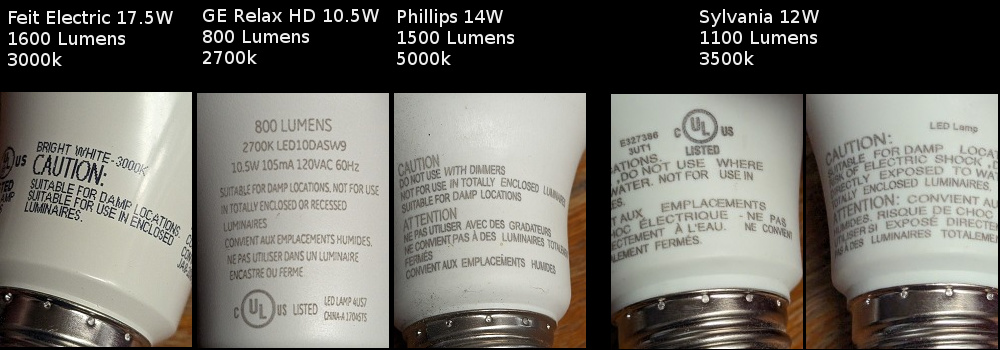cjcox
2[H]4U
- Joined
- Jun 7, 2004
- Messages
- 2,951
Things I don't like, and mostly not LED related, but there's an LED part.... this use of "candelabra" base bulbs in ceiling fan light kits and outdoor lighting.
My outdoor lights, the decorative ones, I have 3. And each took two small base bulbs. I had LEDs in them, but they kept dying and would get filled up with bugs and removing the bulbs, the bulbs would always tear from the base, leaving me trying to dig out the base from the sockets. I ripped out all 3 decorative lights, replaced them with single normal full size socket single bulb units and from my priceless stash of CFLs, replaced them all with CFLs which have lasted for years ... and of course, I have the best lights in the whole neighborhood.
Having replaced a ton of LEDs inside the home over the years, I think the Phillips ones have worked the best for us, especially the warmer color ones. Obviouisly... LED, so get the absolute highest/brightest possible since no matter what you compare them to, they will always be "less". I mean, sure, they blind you if you look at them, but as far as actual light to ... I don't know... read by (for example), LED is sort of total crap. Anyway, again, if your world is all LED, you don't care, you have no idea what "real light" is like.
My outdoor lights, the decorative ones, I have 3. And each took two small base bulbs. I had LEDs in them, but they kept dying and would get filled up with bugs and removing the bulbs, the bulbs would always tear from the base, leaving me trying to dig out the base from the sockets. I ripped out all 3 decorative lights, replaced them with single normal full size socket single bulb units and from my priceless stash of CFLs, replaced them all with CFLs which have lasted for years ... and of course, I have the best lights in the whole neighborhood.
Having replaced a ton of LEDs inside the home over the years, I think the Phillips ones have worked the best for us, especially the warmer color ones. Obviouisly... LED, so get the absolute highest/brightest possible since no matter what you compare them to, they will always be "less". I mean, sure, they blind you if you look at them, but as far as actual light to ... I don't know... read by (for example), LED is sort of total crap. Anyway, again, if your world is all LED, you don't care, you have no idea what "real light" is like.
![[H]ard|Forum](/styles/hardforum/xenforo/logo_dark.png)
